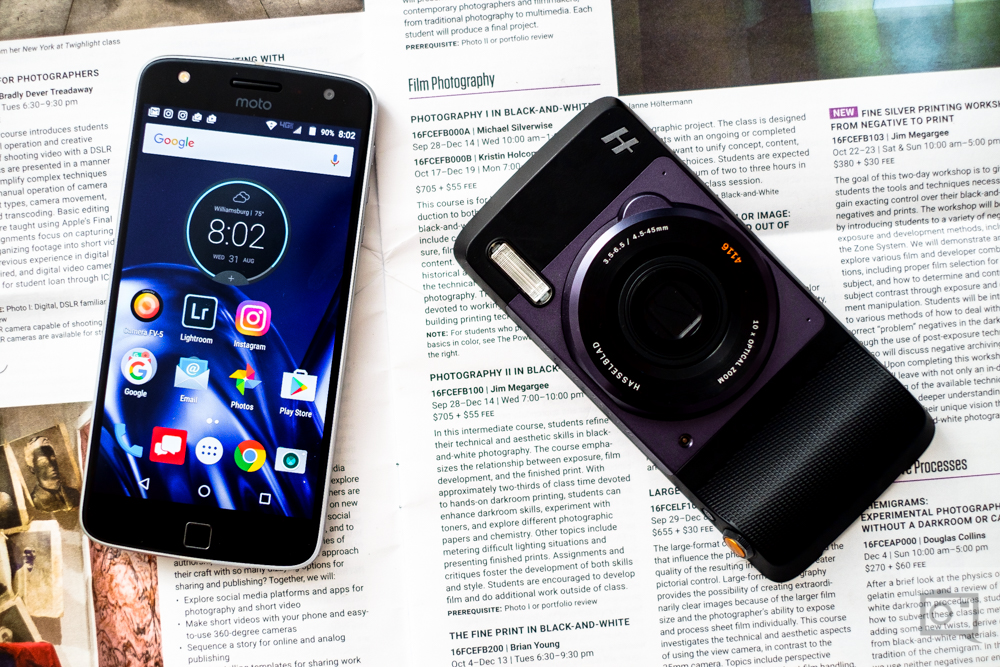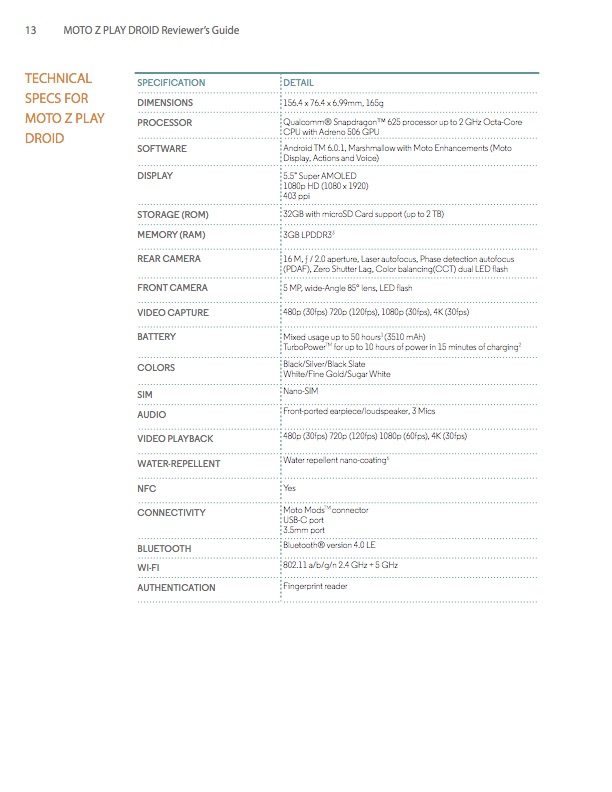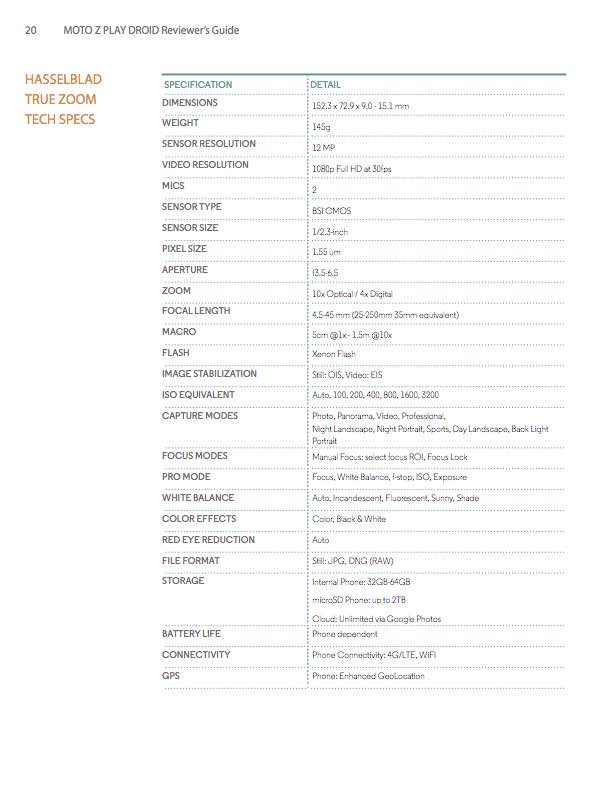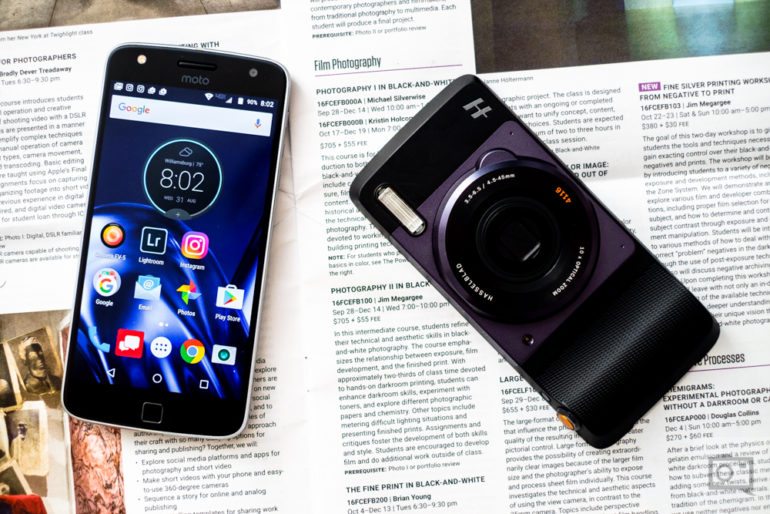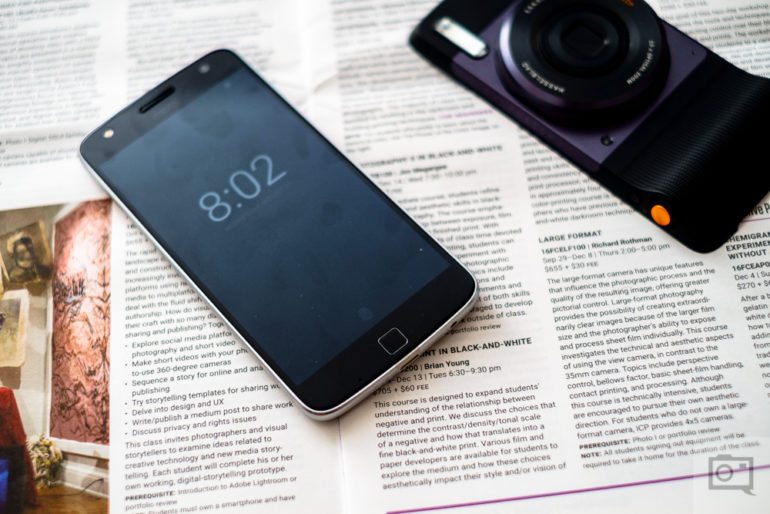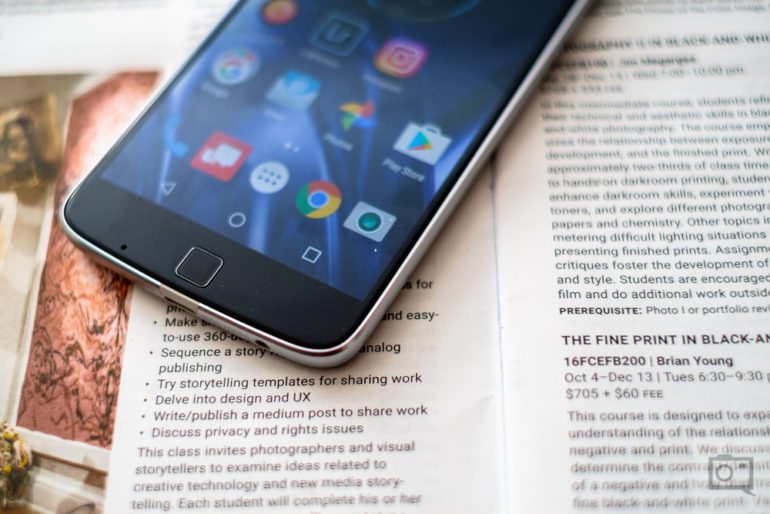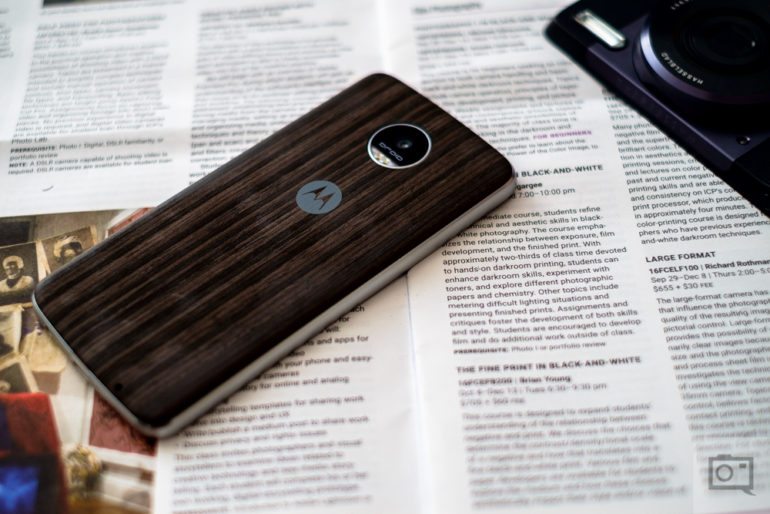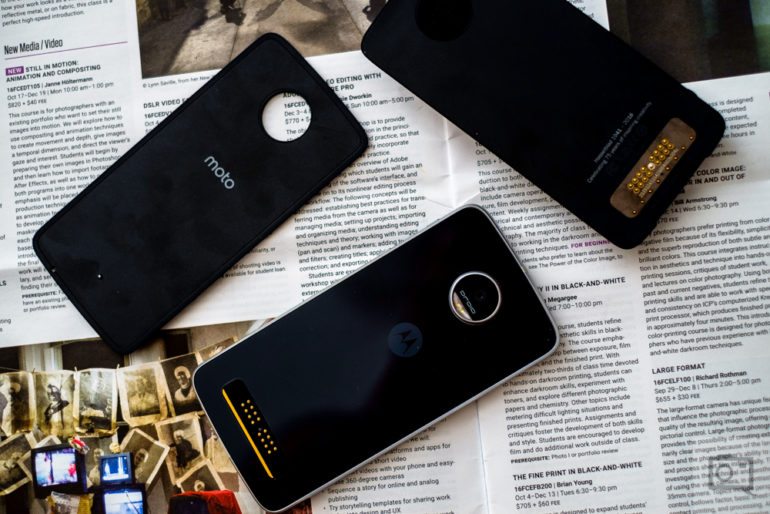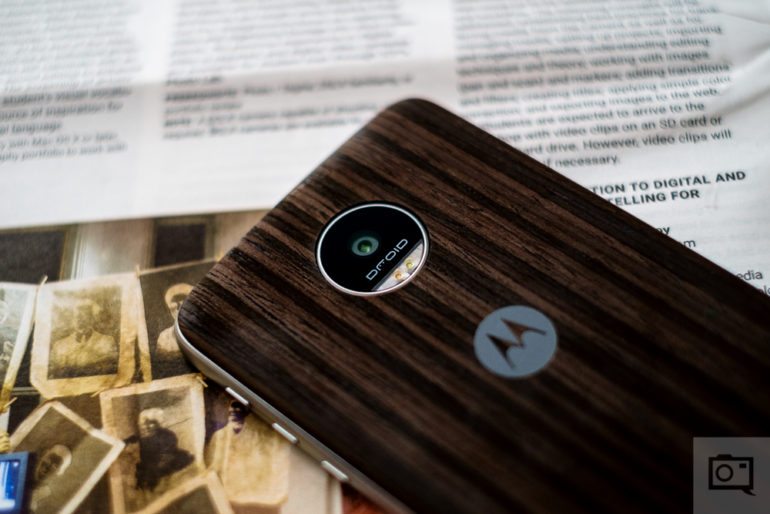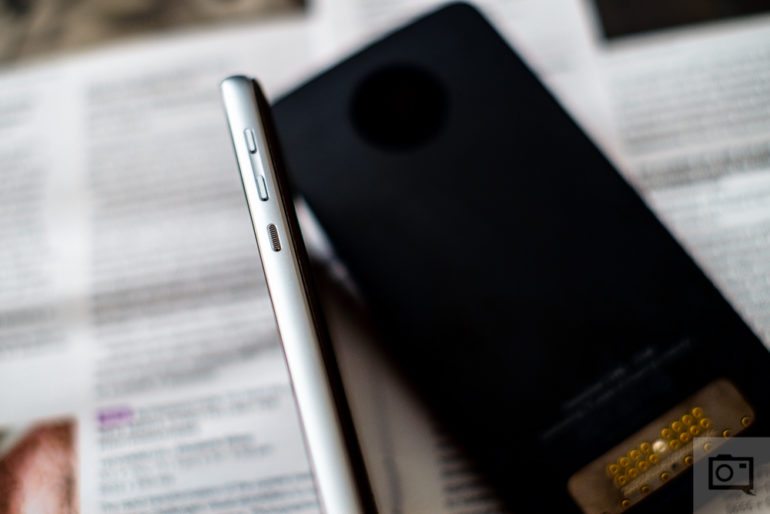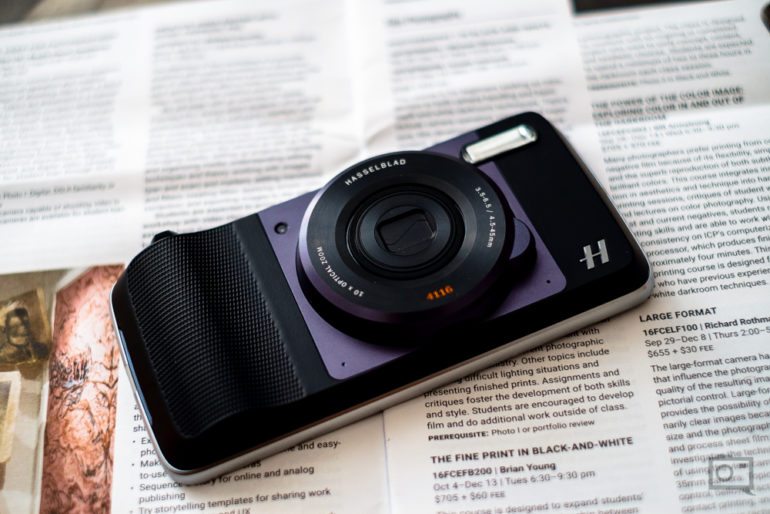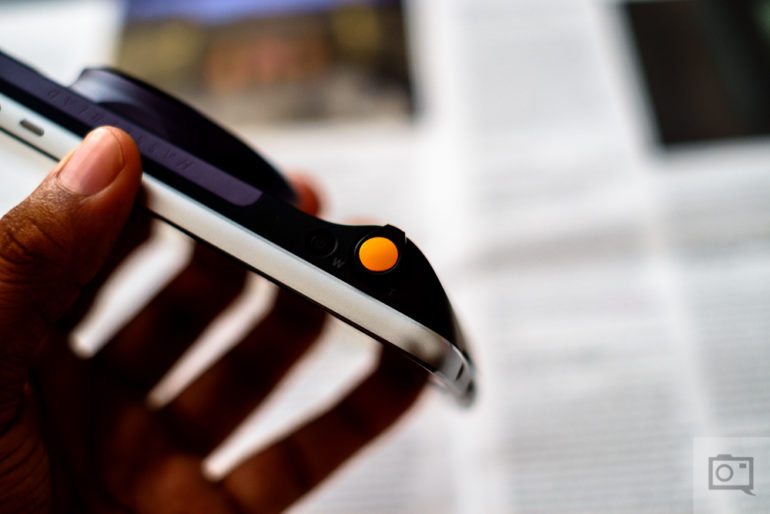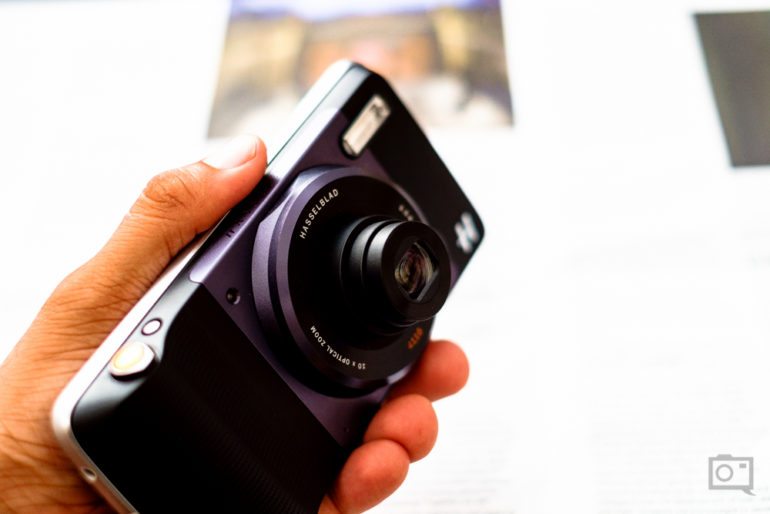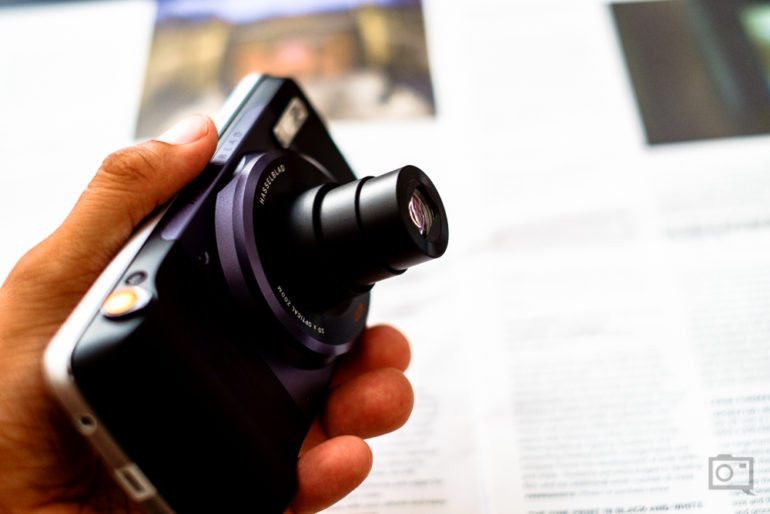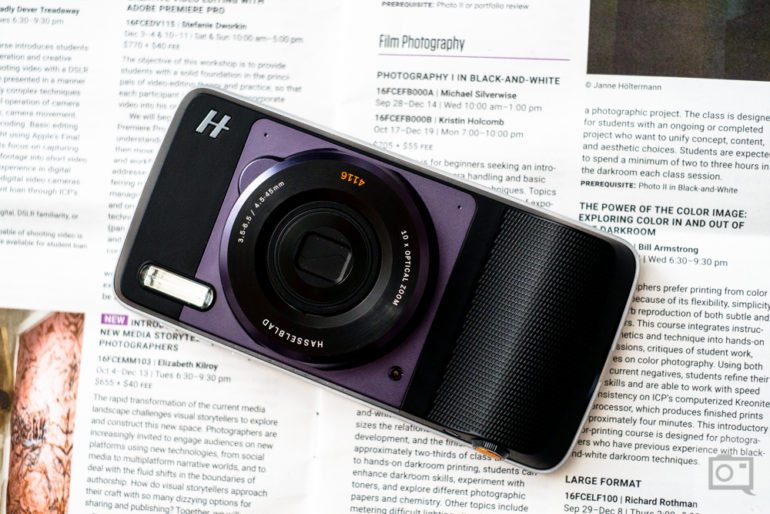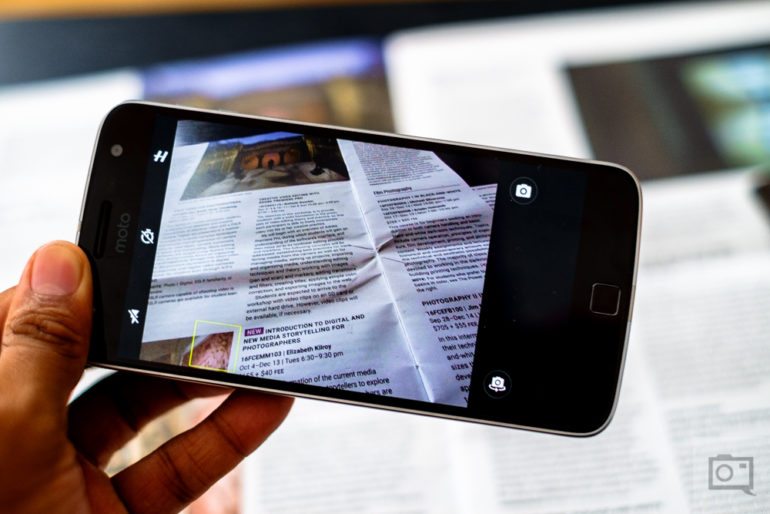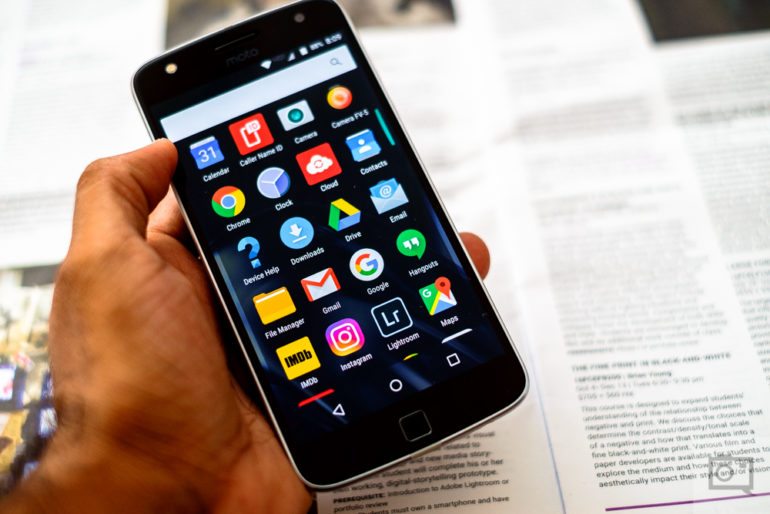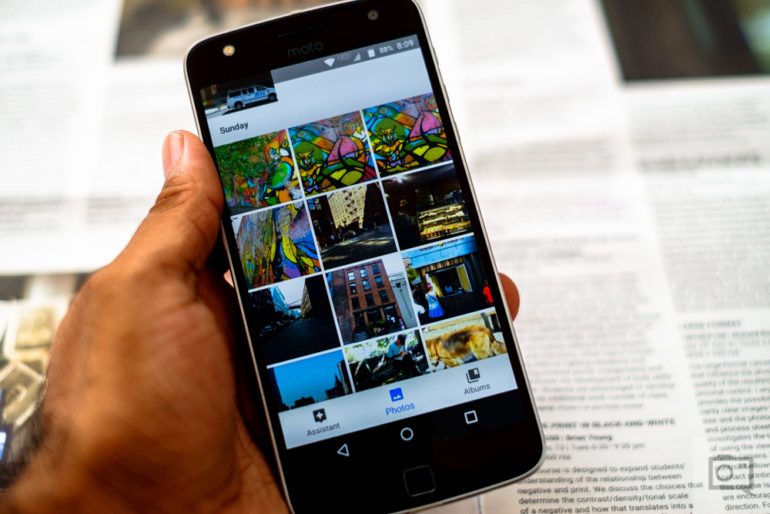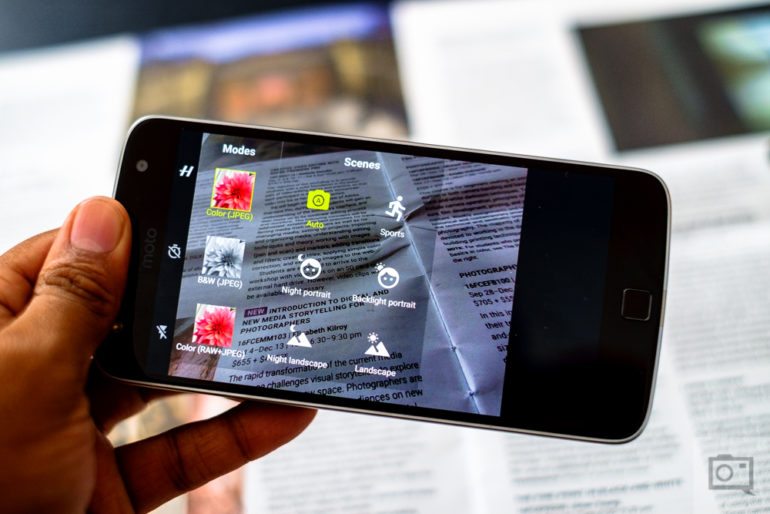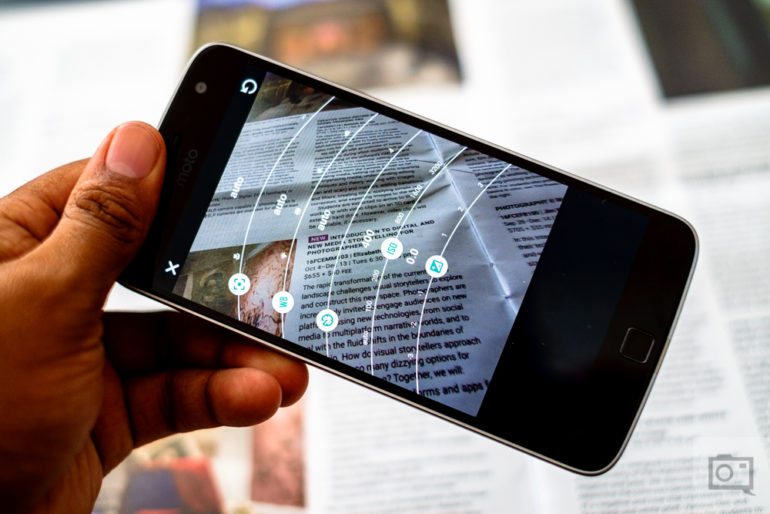Last Updated on 08/31/2016 by Chris Gampat
When you look at the state of camera phones today, you’ll find loads of interesting options out there–and today the Motorola Moto Z Play & Hasselblad True Zoom phone are yet another option available that’s trying to really stand out from all the rest. It seeks to appeal to a person’s specific interests by allowing various peripherals to be connected to the phone; and with the case of the Hasselblad True Zoom peripheral, you have a 10x optical zoom with a camera, a zoom rocker, and a shutter button that work pretty well. Indeed, it makes a load of sense and truly embodies the evolution of the point and shoot camera.
At the same time though, it has its share of problems that Motorola promises will be fixed very soon.
Pros and Cons
Pros
- Very fast performance
- Simple to use
- Beautiful, crisp screen
- Lots of versatility
- Water repellant coating on the outside
- Expandable mini SD card memory slot
- Customizable gestures are cool
Cons
- RAW files have issues in the corners that will be fixed by Hasselblad soon
- Entire back of the phone is very glossy and is prone to fingerprints
- Large, and not very pocketable with a peripheral attached
Tech Specs
Moto Z Play
Hasselblad TrueZoom
Ergonomics
Think about almost any general Android phone that you’ve seen out there and you’ll probably not be able to tell a lot of them apart. So when you initially look at the Moto Z Play, you may feel the same way. Like many other Android devices, it has a minimal design overall.
The screen is almost devoid of buttons with the exception of a little button on the bottom of it. This isn’t a hard, physical button per se, but instead a fingerprint scanner.
The other ways to interact with content on the screen come up on the bottom–where you’ve got a back button, tabs/apps button, and a back/exit button. Again though, they’re not exactly buttons.
Turn to the back and you’ll find this plate that Motorola provided for us. The only major part that you’ll find here is the camera–that is until you remove the plate.
When the plate is removed, you’ll find a glossy screen and this area with pins/contacts. These are used to interact with a variety of other peripherals that can be connected. Indeed, these need to line up perfectly to work in conjunction with the Hasselblad TrueZoom.
All of the peripherals connect through the use of magnets–which have quite a bit of pull to them. Nothing has ever come off by accident.
The only hard buttons on the Moto Z Play are the volume buttons and the on/off button located on the right side. I still can’t decide whether I like this more or the iPhone’s separation of buttons on either side.
The TrueZoom has little things that are designed to make it look like a mirrorless camera. For example, look at that purple hump by the lens and the H logo. That’s supposed to resemble a lens release switch.
Then there is a flash: and this is an actual Xenon flash vs the LEDs on other phones. True flashes work by creating a tiny explosion inside, which results in the pop you sometimes hear. LEDs often just aren’t strong enough and don’t work in the same way.
Plus you’ve got a textured grip which is rather comfortable.
On top of the TrueZoom, you’ve got this shutter release button and the zoom rocker. This lets you focus further away or closer.
The lens comes out a bit when the camera is turned on. This is just standard for any point and shoot camera out there.
When zoomed in all the way, the TrueZoom still keeps a fairly compact size overall.
Build Quality
While I feel that the Moto Z Play is a bit too large for my paws, I have to admit that it’s one of the most comfortable large phones that I’ve ever held. The edges are smooth but contoured just enough to fit into the crevices of your hand. While the large size is bound to hurt your hand if you’re trying to operate the phone one handed while laying down in bed and you’re checking your email right after your alarm wakes you up, it’s not too terrible still overall. Despite all this, there are lots of people with bigger hands that would love this phone.
Before I bought my iPhone 6s, I owned the Nexus 5 and have owned loads of Android phones since the original G1 came out. Many of the phones around the size of the Nexus 5 and the iPhone 6s are ideal for me. But something that would be very important to people with worse vision than mine (and I’m pretty bad) is the large screen. My father is in his 60s and complains to me every time we’re on the phone talking about what’s coming next in the tech world. He needs something with a larger screen and even wants to go for a Galaxy Note phone.
Unfortunately, the Note and my Brooklyn skinny jeans don’t play together so well.
Unlike the Nexus phones, the fingerprint scanner is on the front–just like the iPhone. And I genuinely love this. Holding your finger on it wakes the phone up and brings you back to exactly what you were doing before.
What’s even cooler overall is that the camera is in just the right spot to ensure that you don’t really cover the lens with fingerprints by accident. This becomes even less complicated when the Hasselblad True Zoom is attached. Like point and shoot cameras, this peripheral has shades that cover up and protect the lens. It ends up working very well.
The combination has a bit of a grip that is just enough to make it ergonomically pleasing but also makes the phone tough to stuff into your jeans when the True Zoom is attached.
Ease of Use
Here’s where things are a bit odd for me. Before I left the Android world, I was working with a plain Vanilla Android. And in truth, this is the absolute best version possible. When I looked at a recent Samsung phone’s skin and what’s on the Moto Z Play, I find this to still be pretty minimal. There is very little bloatware at all from Motorola but there’s a ton from Verizon. I’ve been a T-Mobile customer since I was 16 and what I’ve always appreciated is that T-Mobile puts little to nothing on your phone, though you’re encouraged to download a few of their apps.
On the iPhone, I’ve got nothing from T-Mobile.
Being an iPhone user for around a year now has made me forget everything that Android has, and few of my friends have Android devices. I was able to figure most of the phone out though and anything that I wasn’t able to figure out immediately, I finally did after some exploring. For the person that doesn’t mind exploring and hacking, the Android platform has always been great. But the major reason (besides the fact that 90% of Phoblographer’s mobile readers are on the iPhone) I left Android is because I didn’t think that there was a cohesive photography community at all. Anyone I know with an Android phone loves talking about specs and all the technical stuff. But no one talks about art–and the sad thing is that as soon as you try to start talking about art, the conversation switches back to tech.
The iOS community on the other hand is solely about art. Take it from a guy that’s been a staunch Android phone user for many years and made fun of iOS users. Apple may be behind in some ways, but their communities are what appeal to me personally.
Camera
The standard cameras on the Moto Z Play are pretty nice. They can deliver sharp, contrasty photos that can hold their own with almost any non-premium point and shoot. But they’re also nothing that make me personally think that it’s anything better than all the rest when you look at the image as a whole. Using the Moto Camera app, you have creative control over the shutter speed, ISO, etc.
When you attach the TrueZoom, you don’t have control over the aperture despite the fact that the device has more than one aperture setting. This is also the only way that you can shoot RAW photos.
A major interface issue that I have is that the phone never saves your settings. So if you want to shoot RAWs, you’ll need to ensure that your phone is set to that before you start shooting. What this does in effect is kind of negate the whole idea of capturing the moment. Sure, you can do this in JPEG mode, but otherwise if you want a RAW file, you’ll be missing out if you start up the camera and go for it. As it is, the phone can take a few seconds to fully start up the TrueZoom.
Autofocus
The Hasselblad TrueZoom’s autofocus interface works pretty much like every other phone. You click on a spot and the phone will adjust the exposure accordingly to what you’re focusing on. Additionally, it has manual focusing abilities. These could be made even better with the addition of a feature like focus peaking. But overall, you should be aware that this is a camera with a small sensor–it’s not going to have a lot of problems autofocusing in good lighting. When the light gets low, that’s when you’ve got a problem.
RAW File Versatility/High ISO/Color Rendition

Additionally, there’s a big issue with vignetting on the wide side and shooting a RAW file. I asked Motorola about this, and here’s what they said:
“Hi Chris,
Thanks for reaching out! Distortion and vignetting (corner effect) are removed in camera ISP processing and with Hasselblad’s Phocus software.
Additionally, TrueZoom Raw mode will be fully supported by Hasselblad’s Phocus software. While other raw readers can open these raw images, TrueZoom Raw designed to work best with Hasselblad’s Phocus. Hasselblad is currently finalizing their software and it will be ready when True Zoom by the commercial release on 8/31.”
So basically, this can be fixed with the Hasselblad Phocus software. To that end, it means that you NEED to bring the files into your computer to take the fullest advantage.
This vignetting goes away when you start zooming in. Here’s an example:















Extra Image Samples





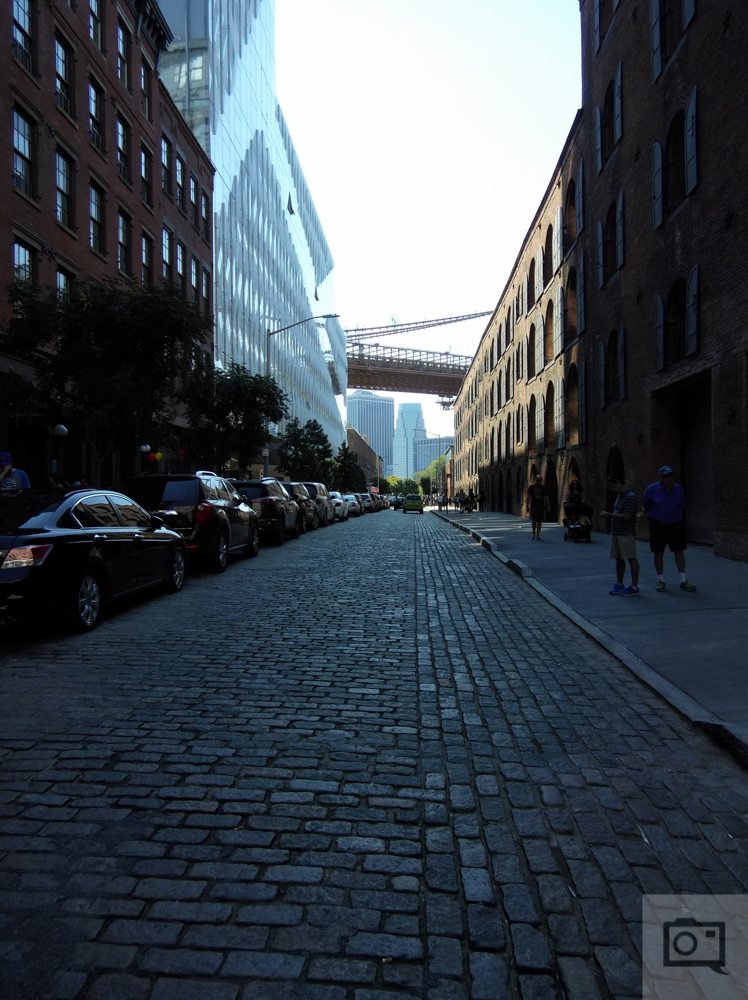















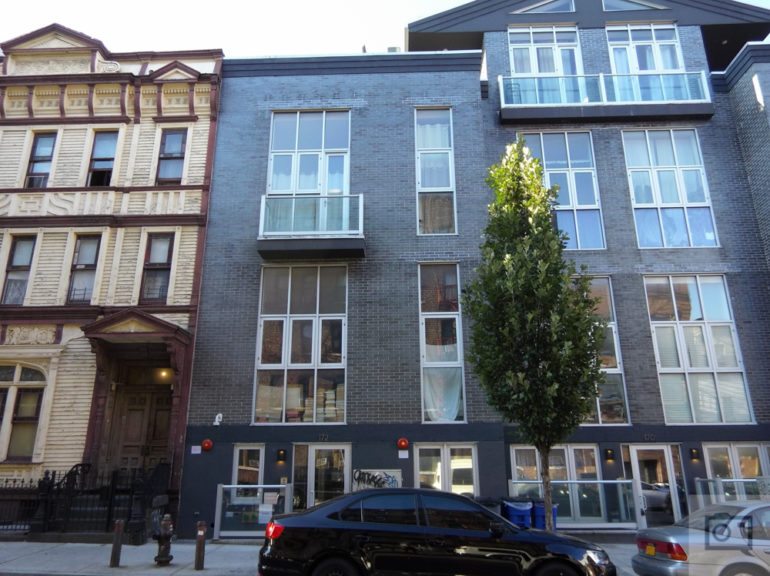


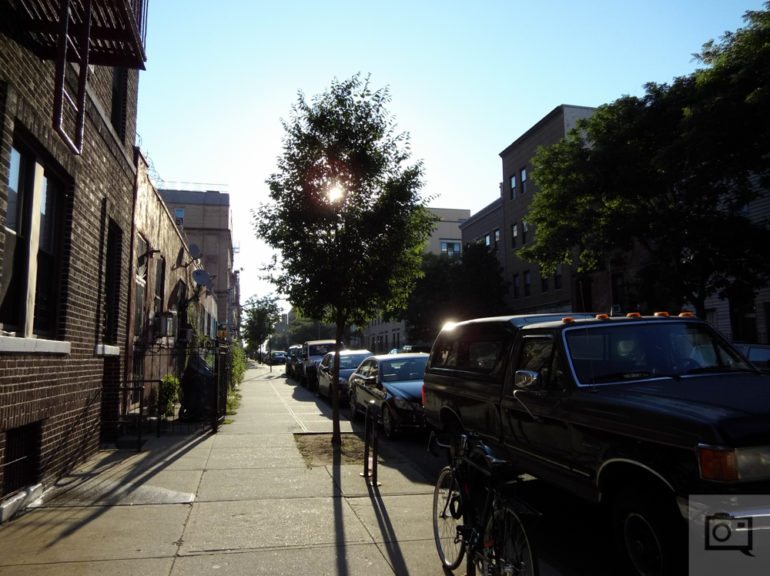
Conclusions
So do I like this phone? It’s really pretty good. Would I switch from iOS to this? No. I’m not a fan of larger phones because of the size of my hands and I purposely chose to go to iOS so that I could have the same experience that most of my readers do. I miss somethings about it though: like the better integration of Google Inbox for example and how each app has its own customized sharing interface.
I’ve been playing with the phone for around a week though, and I think that the true test of any phone is how it performs in the long run. After a while, some update may screw things up or it may start to really erode after a while. But from what I see here, it’s all pretty great for the right person.
As far as the Hasselblad TrueZoom goes though, it has slowed down in performance from when I first got it. I think it’s a great item for someone that eventually wants to step up to a premium point and shoot, DSLR, or mirrorless camera. But if you’re looking to step down, you’ll be disappointed.


